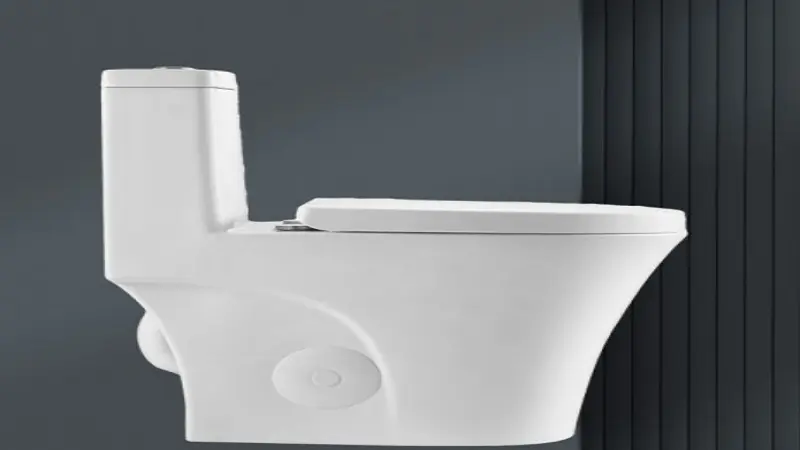Toilet traps are essential components of modern plumbing systems. They play a crucial role in waste management and hygiene.
Among the various designs, the European closet S trap has emerged as a popular choice. This article traces the historical development of toilet traps, highlighting how the European S trap has adapted to modern plumbing needs.
Historical Background of Toilet Traps
The concept of toilet traps dates back centuries. Early sanitation systems relied on simple methods to manage waste.
Ancient civilizations used rudimentary drainage systems that lacked the sophistication of today’s designs. As urban areas grew, so did the need for effective waste management solutions with the European water closet S trap.
In the 19th century, the Industrial Revolution led to significant advancements in plumbing technology. This period saw the introduction of the first modern toilet traps.
These designs aimed to prevent sewer gases from entering homes while facilitating the safe disposal of waste in the S trap European closet.
The Design of Early Toilet Traps
Early toilet traps, such as the P trap, became popular during this time. The P trap features a U-shaped curve that holds water, creating a seal against odors. While effective, it has limitations, especially in terms of space and installation requirements for the Europe toilet bowl.
In contrast, the European closet S trap was developed to address these challenges. Its S-shaped design offers several advantages, including compactness and ease of installation.
This made it particularly appealing for European homes, where space is often at a premium and was a key focus for European toilet manufacturers.
The Rise of the European S Trap
The European S trap gained popularity throughout the 20th century. Its design evolved to meet the needs of modern plumbing systems. The S trap features a more streamlined profile, allowing it to fit in tight spaces while maintaining functionality.
One of the key benefits of the European water closet S trap is its ability to create a reliable water seal.
This prevents sewer gases from entering living spaces, improving indoor air quality. Additionally, its design minimizes the risk of clogs, making it easier to maintain in the S trap European closet.
Adaptations for Modern Plumbing Needs
As plumbing technology advanced, so did the European S trap. Manufacturers began incorporating new materials and manufacturing techniques. These innovations improved the durability and efficiency of the S trap European closet design.
For instance, modern S traps are often made from high-quality plastics or ceramics. These materials resist corrosion and wear, ensuring a longer lifespan.
Additionally, the lightweight nature of these materials simplifies installation, making it accessible for homeowners and plumbers alike in the European water closet S trap.
Integration with Eco-Friendly Technologies
In recent years, there has been a growing emphasis on sustainability. The European closet S trap has adapted to this trend by integrating eco-friendly technologies. Many modern S traps feature water-saving designs, which reduce overall water usage during flushing.
This focus on sustainability is in line with broader trends in plumbing. As water conservation becomes increasingly important, the European S trap offers an effective solution. Its design not only promotes efficient waste disposal but also aligns with environmental goals set by European toilet manufacturers.
The Role of European Toilet Manufacturers
European toilet manufacturers have played a significant role in the evolution of the S trap design. They continuously innovate to enhance the efficiency and functionality of their products. This commitment to improvement has made the European closet S trap a standard in many modern bathrooms.
Manufacturers often conduct extensive research and development. This helps them stay ahead of emerging trends and consumer preferences. As a result, the European S trap remains relevant in today’s plumbing landscape, meeting the demands of consumers and installers alike.
Comparison with Other Trap Designs
While the European S trap is highly regarded, it is essential to compare it with other designs. The P trap, for example, remains common in many parts of the world.
However, it often requires more space for installation, making it less suitable for compact areas like those served by the Europe toilet bowl.
In contrast, the European closet S trap is designed to maximize space efficiency. This is particularly beneficial in smaller bathrooms, where every inch counts. Additionally, the S trap’s design can reduce the risk of clogs compared to traditional P traps.
For more information, visit the modern toilet bowl.
Challenges and Future Developments
Despite its advantages, the European S trap is not without challenges. Some homeowners may encounter issues such as odors or slow drainage. These problems often arise from improper installation or lack of maintenance of the European water closet S trap.
Looking ahead, the future of the European S trap will likely involve further innovations. Advances in smart plumbing technologies may lead to the development of intelligent S traps. These could feature sensors to detect clogs or monitor water levels, enhancing user experience.
Embracing Smart Technologies
The integration of smart technologies into plumbing systems is gaining traction. Future European S traps may incorporate features that alert homeowners to potential issues. This proactive approach can help prevent costly repairs and improve overall efficiency in the S trap European closet.
Conclusion
The evolution of toilet trap designs has significantly impacted modern plumbing. The European closet S trap stands out for its efficiency, compactness, and adaptability. As plumbing needs continue to evolve, the S trap is likely to remain a staple in European homes.
By understanding the historical development and future potential of the European water closet S trap, homeowners can appreciate its importance. It not only addresses waste management needs but also contributes to a healthier living environment.
The ongoing innovations in design and technology ensure that the S trap will continue to meet the demands of modern plumbing for years to come.
